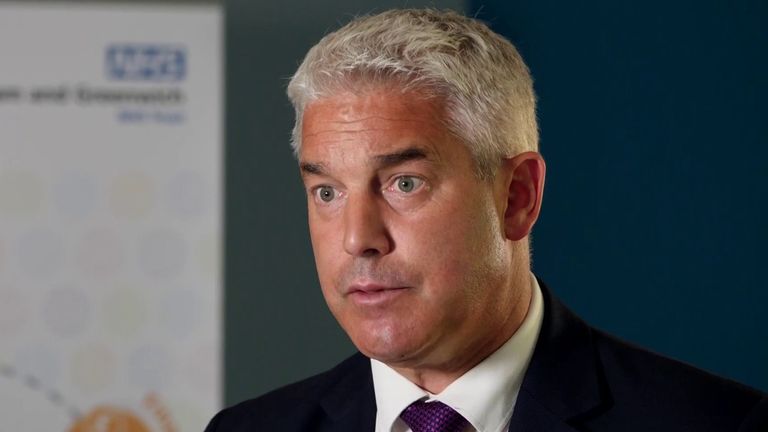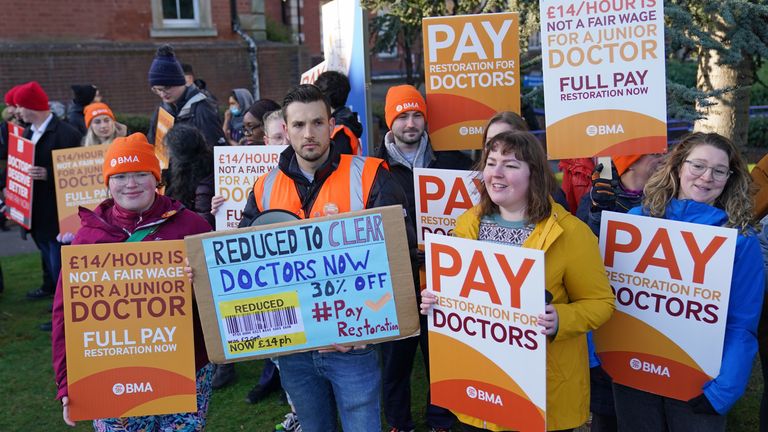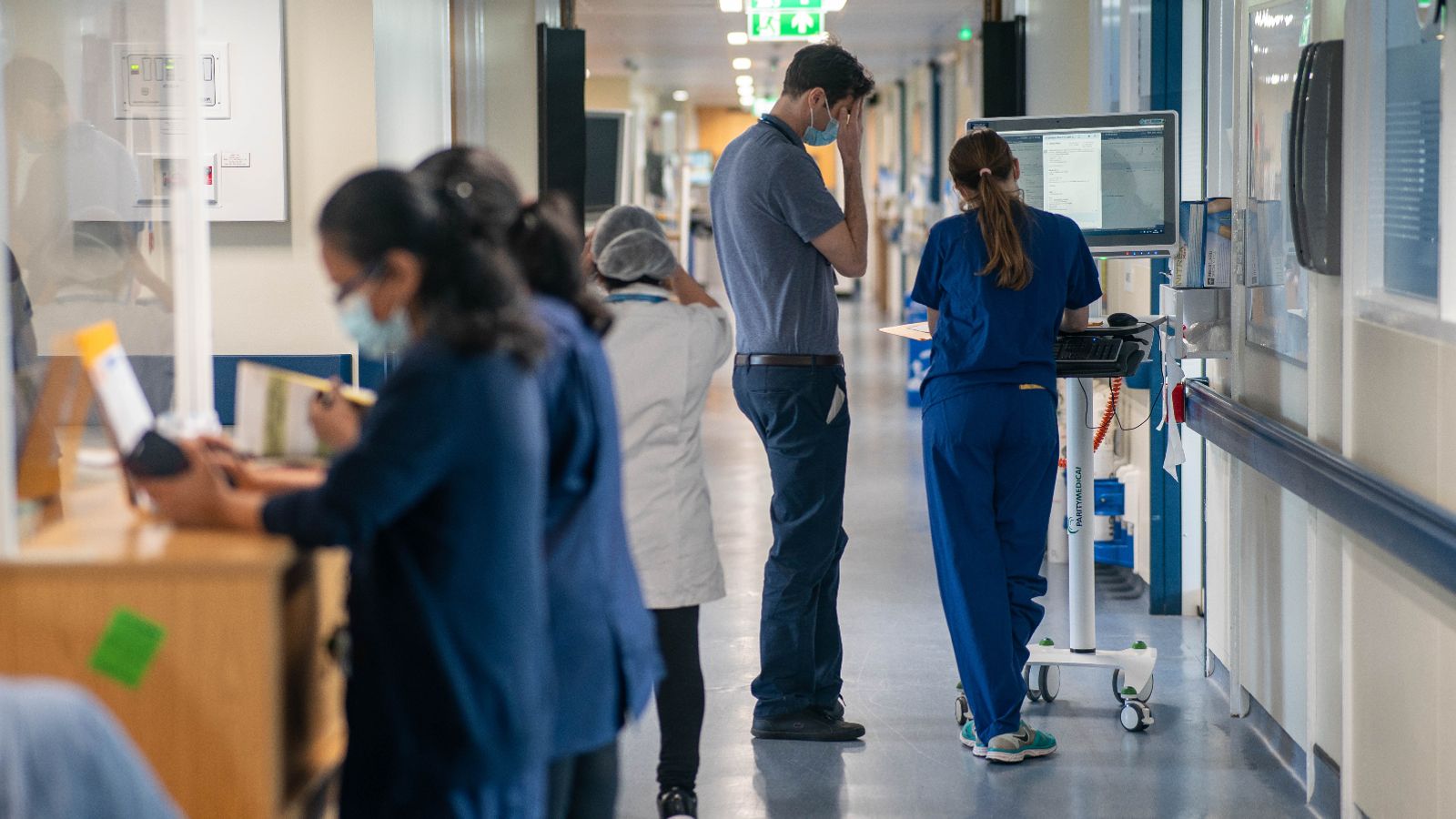Ministers are injecting £250m into the NHS ahead of winter as they try to get a grip on record waiting times for treatment.
The funding for 30 NHS organisations across England will create 900 new beds in urgent and emergency care services to avoid patients needing to be admitted and occupying hospital spaces.
However, a health union boss has questioned who will staff these additional beds given the more than 40,000 nursing vacancies across the struggling services, while Labour has labelled the announcement a “sticking plaster” and called on Prime Minister Rishi Sunak to “apologise for his party’s vandalism of the NHS”.
The fresh injection of cash forms part of the two-year Urgent and Emergency Care Recovery plan, published in January, which aims to increase NHS capacity with 5,000 new beds, improve patient experience and reduce waiting times.
The NHS said it expects the majority of the urgent treatment and same-day emergency care expansion projects to be completed by January as the NHS comes under its usual severe winter pressures.
Extra funding is being allocated to areas such as Peterborough, London, Hull, Worthing, Surrey, and Croydon to both expand “underutilised non-clinical space” and also “develop or expand” urgent treatment centres and same-day emergency care services.
Mr Sunak said: “Cutting waiting lists is one of my top five priorities, so this year the government has started planning for winter earlier than ever before and the public can be reassured we are backing the NHS with the resources it needs.
“These 900 new beds will mean more people can be treated quickly, speeding up flow through hospitals and reducing frustratingly long waits for treatment.”
Health and Social Care Secretary Steve Barclay said: “We know that winter is a difficult time so we’re working to get ahead of pressures whilst also creating a sustainable NHS fit for the future.”
Amanda Pritchard, the NHS chief executive, added it was “right that we put robust plans in place as early as possible to boost capacity and help frontline staff to prepare for additional pressure”.
She continued: “Our winter plans, which build on the progress already made on our urgent and emergency care recovery plan, aim to reduce waiting times for patients and to transform services with an expansion of same day care and virtual wards, helping patients to be cared for in their own home where possible.”
However, the chief executive of the Royal College of Nursing, Pat Cullen, said in a statement: “The elephant in the room is who will staff these additional beds? Nursing staff are already spread too thinly over too many patients.
“Everyday nursing staff are under unsustainable pressure, with over 40,000 vacant nursing posts in England. It is leaving our patients receiving lower quality care, often in inappropriate settings, and our colleagues burnt out and heading towards the door.
“If the prime minister is serious about cutting waiting times, he should not ignore the nursing staff walking out of the profession. He will continue to fail to meet his pledge to cut NHS waiting times if nursing is not seen as an attractive, well-paid profession to join or stay in.”
The NHS remains under severe pressure amid strike action from junior doctors and consultants, which Mr Sunak has blamed for the failure to significantly reduce long waiting lists, which had reached a record 7.6 million at the end of June.
Junior doctors began a fifth walkout on Friday – which is due to finish on Tuesday morning – with more strikes set to take place in the coming weeks.
The government says 778,000 appointments have been disrupted during the strikes, but the British Medical Association (BMA) says doctors have no choice due to dwindling pay.
Read more:
Cancer waiting time targets could be scrapped in England
Smokers could be urged to quit with messages in cigarette packs
Labour’s shadow health secretary Wes Streeting has put the blame squarely on the government for the disruption to the health services, saying: “Conservative mismanagement of the NHS has left us with huge backlogs, unacceptable waiting times, and an annual winter crisis.
“Now Rishi Sunak is offering a sticking plaster, which comes nowhere near the 12,000 beds the Conservatives have cut over the last 13 years.
“Rishi Sunak should apologise for his party’s vandalism of the NHS. Patients deserve better.
“We didn’t have an annual winter crisis in the NHS when Labour was last in government. The next Labour government will provide the staff, modern technology, and reform the NHS needs to treat patients on time all year round.”










